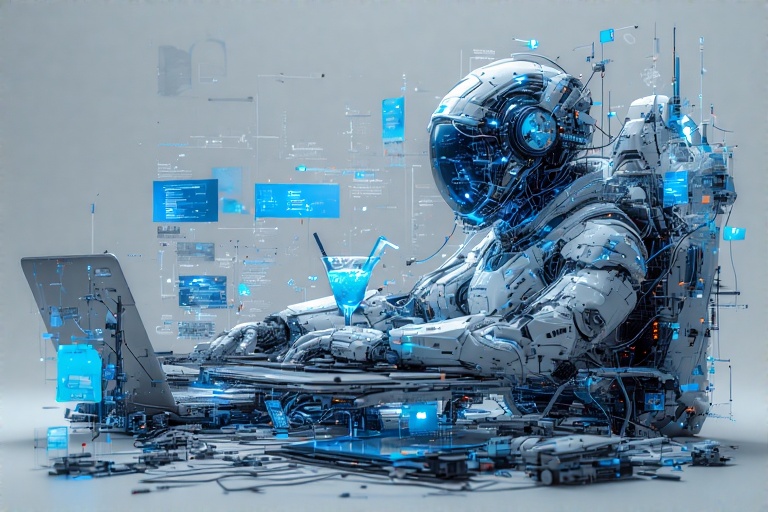Quantum computing flips classic computing on its head by harnessing the peculiar rules of quantum mechanics. Instead of bits locked at 0 or 1, quantum machines manipulate qubits that can inhabit multiple states at once. This parallelism and entanglement allow quantum processors to tackle certain tasks—like simulating molecules or optimizing vast networks—far more efficiently than today’s best supercomputers.
How Qubits Differ from Bits
Classical bits follow simple logic: on or off, 0 or 1. Qubits, however, live in a superposition of states until measured. Imagine a coin spinning in the air: it’s neither heads nor tails until it lands. When qubits become entangled, two or more coins spin in sync—measuring one instantly fixes the others’ outcomes, even if they’re far apart. These properties let quantum systems explore many possibilities at once.
- Superposition: A qubit can represent 0 and 1 simultaneously, enabling massive parallelism.
- Entanglement: Qubits link together so that their states are interdependent.
- Interference: Quantum amplitudes add or cancel out, steering the computation toward correct solutions.
Key Components of a Quantum Processor
Building a working quantum computer demands precise control over qubits and protection against errors. Major hardware approaches include:
- Superconducting Circuits: Qubits formed by superconducting loops cooled near absolute zero. IBM and Google favor this design.
- Trapped Ions: Charged atoms suspended by electromagnetic fields, manipulated with laser pulses. IonQ and Honeywell use this method.
- Photonic Qubits: Light particles traveling through optical circuits at room temperature—offering stability but challenging to entangle.
Each approach balances qubit stability, gate speed, and scalability. Error correction schemes bundle many physical qubits into a single “logical qubit” that resists noise, but this multiplies hardware demands.
Recent Milestones
Quantum hardware has charged ahead in the last few years:
- In 2019, Google’s 53-qubit Sycamore chip performed a benchmark task faster than any known classical machine.
- IBM unveiled a 433-qubit processor in 2022 and announced plans for a 1,121-qubit system by 2024.
- IonQ demonstrated an 11-qubit error-corrected block in 2023, a key step toward fault-tolerant machines.
- Cloud platforms—IBM Quantum Experience, AWS Braket, Azure Quantum—now offer free or low-cost access to simulators and real devices.
Hardware progress is measured not only by qubit count but also by quantum volume, a metric combining connectivity, gate fidelity, and error rates. Today’s machines boast increasing volume, moving us closer to devices that provide real, problem-solving advantage.
Applications Poised for Quantum Speedups
Quantum speedups shine in domains with vast search spaces or complex interactions. Let me show you some examples:
- Chemistry & Materials: Modeling molecular bonds, protein folding, or novel battery materials at the quantum level to predict behavior more accurately.
- Optimization: Solving routing, scheduling, and resource-allocation problems that grow exponentially with size.
- Machine Learning: Enhancing kernel methods or sampling distributions in ways that classical algorithms struggle to scale.
- Cryptography: Shor’s algorithm threatens RSA and ECC, driving development of quantum-safe encryption standards.
Running a simple code roughly equal counts of “00” and “11,” the hallmark of an entangled Bell pair.
Getting Started in Quantum Development
- Brush up on linear algebra and complex numbers; free courses cover vectors, matrices, and probabilities.
- Install Python and a quantum SDK such as Qiskit, Cirq, or PennyLane.
- Run basic examples on a local simulator to understand superposition and entanglement.
- Sign up for cloud quantum services and experiment on real hardware with small circuits.
- Implement classic quantum algorithms—Grover’s search, Bernstein–Vazirani, or simple chemistry simulations—to deepen your intuition.
Challenges on the Road Ahead
- Noisy Qubits: Physical qubits lose coherence in microseconds, requiring sophisticated error mitigation.
- Resource Requirements: Error correction may demand hundreds of physical qubits for each logical unit.
- Interdisciplinary Expertise: Quantum engineers need skills spanning physics, computer science, and electrical engineering.
- Software Ecosystem: Toolsets are maturing, but best practices for hybrid quantum-classical workflows are still evolving.
The Quantum Horizon
Fault-tolerant, large-scale quantum computers remain on the horizon, but near-term “noisy” devices are already unlocking hybrid algorithms that combine classical and quantum steps. As error rates drop and connectivity improves, expect quantum accelerators to integrate into high-performance clusters for tasks that stump classical hardware.
Welcome to the age where quantum mechanics meets computation, opening pathways to discoveries beyond classical reach.







Add a Comment